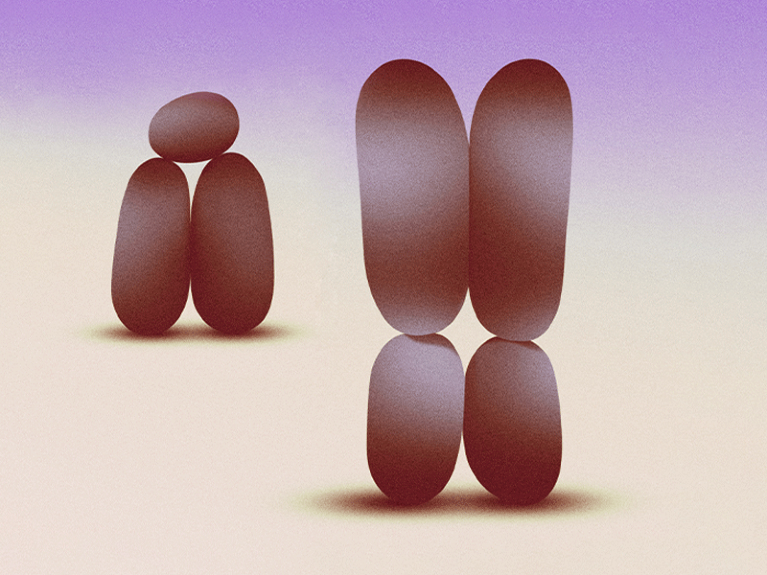[ad_1]
Hello Nature readers, would you like to get this Briefing in your inbox free every day? Sign up here.

Rakus, two months after he was observed applying a poultice to an open wound on his cheek. The wound is healed and the scar is barely visible.Credit: Safruddin
For the first time, a wild animal has been documented using a medicinal plant to treat a wound. Rakus, a Sumatran orangutan (Pongo abelii), sustained a gash in his cheek, probably by fighting other males for status. Two days later, scientists noticed him eating the leaves of a vine known for its medicinal properties. He also applied a poultice of chewed leaves to his injury. Just eight days later, his wound was fully closed. Self-medication of other kinds has been observed in some animals, but this “shows that orangutans and humans share knowledge,” says primatologist Caroline Schuppli, who co-authored a study on the event. “Since they live in the same habitat, I would say that’s quite obvious, but still intriguing to realize.”
Reference: Scientific Reports paper
A trial vaccine for recurring urinary tract infections (UTIs) has kept half its recipients UTI-free for nine years. Recurring UTIs are common but can have debilitating symptoms, especially for women. They are usually treated with antibiotics, which can cause side effects, including an irregular heartbeat. But a urology conference in Paris heard that vaccines, targeted treatment and a non-antibiotic medication are all candidates for preventing recurrent infections. Still, it could take years before improved therapies are widely available. “This won’t be a quick process,” says urologist Bob Yang, who has been working on trials of the oral vaccine, which is called MV140.
The contest to elect the next president of Paris-Saclay University, one of Europe’s biggest research campuses, has collapsed — reflecting wider issues at the giant research centre. A huge merger of four of France’s grandes écoles — elite higher-education institutions — and several other faculties and institutes has led to some teething pains. The two presidential contenders had different visions for the future of the university, but neither was able to reach the bar for election. Now recruitment must start afresh.
Features & opinion
A pioneering cosmic-mapping project seems to show that dark energy could be getting weaker, with potential implications for theories of how the Universe has evolved and for what its future might hold. The mysterious force is like reverse gravity, pushing everything apart and causing the Universe to expand faster and faster, getting colder and emptier. Initial results from the Dark Energy Spectroscopic Instrument in Arizona hint that dark energy is not a constant after all, which means the Universe’s expansion could start to slow down. But researchers say that the evidence for changes in dark energy is still very uncertain.
“I wanted to write a story showing that the messy and problematic parts of humanity are the essential ingredients of connection,” says author Joanna Friedman about her latest short story for Nature’s Futures series.
Andrew Robinson’s pick of the top five science books to read this week includes a deep dive into the debate-inspiring idea of the multiverse, a personal, unshrinking call to action about fatphobia and a fundamentally optimistic book on increasing sustainability.
Male mice given antibiotics targeting gut microbes showed changes to their testes and sperm, which led to their offspring having a higher probability of severe growth issues and premature death. It’s unknown whether a similar effect would be seen in humans, but the finding suggests that factors other than genetics play a role in intergenerational disease susceptibility.
Nature Podcast | 25 min listen
Subscribe to the Nature Podcast on Apple Podcasts, Spotify or YouTube Music, or use the RSS feed.
Today in our penguin-seeking puzzle, Leif Penguinson is hiding somewhere in Tassili N’ajjer national park in Algeria. This huge plateau in the Sahara desert is a UNESCO world heritage site that hosts thousands of drawings and engravings as old as 7,000 years ago. Can you find the penguin?
It’s a holiday in the United Kingdom on Monday, so we’ll be back in your inbox on Tuesday.
In the meantime, we’d love to read your feedback on this newsletter. Please send your get in touch at [email protected].
Flora Graham, senior editor, Nature Briefing
With contributions by Katrina Krämer, Smriti Mallapaty, Gemma Conroy, Dyani Lewis, Sarah Tomlin and Sara Phillips
Want more? Sign up to our other free Nature Briefing newsletters:
• Nature Briefing: Microbiology — the most abundant living entities on our planet — microorganisms — and the role they play in health, the environment and food systems.
• Nature Briefing: Anthropocene — climate change, biodiversity, sustainability and geoengineering
• Nature Briefing: AI & Robotics — 100% written by humans, of course
• Nature Briefing: Cancer — a weekly newsletter written with cancer researchers in mind
• Nature Briefing: Translational Research — covers biotechnology, drug discovery and pharma
[ad_2]
Source Article Link


